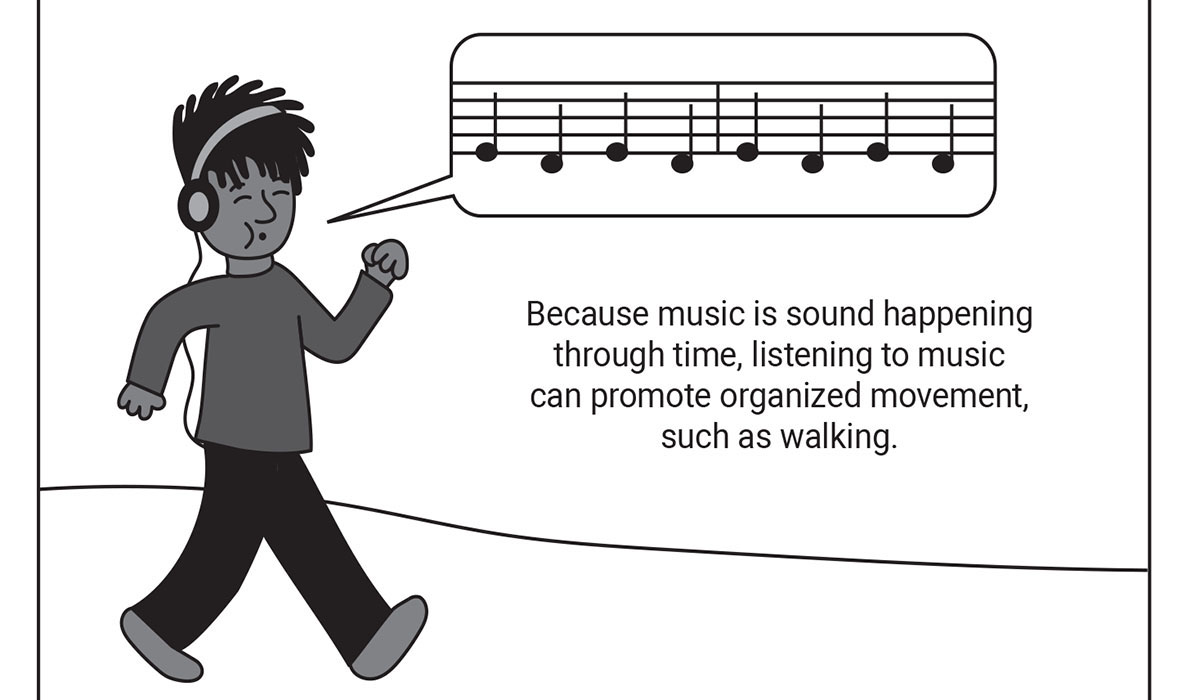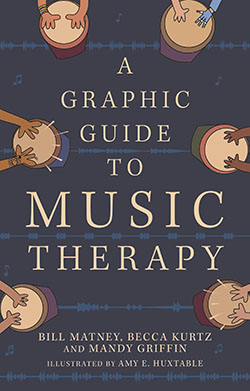Graphic guide makes music therapy accessible

LAWRENCE — Bill Matney’s 2019 article “A Knowledge Framework for the Philosophical Underpinnings of Research: Implications for Music Therapy” delved deeply into the subject for readers of the field’s top journal.

The new book the University of Kansas associate professor of music therapy co-wrote, “A Graphic Guide to Music Therapy” (Jessica Kingsley Publishers), eventually gets to some theoretical material, but it’s an introductory text that takes graphic form — much like a comic book.
“The publishing company had put out a similar book on art therapy by the same graphic designer who worked with us, Amy Eli Huxtable,” Matney said. “So they asked her, ‘Do you think we could do this with music therapy, too?’ Amy is an art therapist who works with music therapists, so she reached out to some ... and eventually that that group included me.”

Matney’s two co-authors, Becca Kurtz and Mandy Griffin, are, like Matney, graduates of KU’s pioneering music therapy program.
“Our hope from the outset was for accessibility,” Matney said. “We are trying to take what is really a complex subject — music therapy — and communicate the basic understanding so that someone who has no idea could read it and go, ‘Oh, this makes sense to me.’”
The book begins by distinguishing between the therapeutic use of music and the ordinary, everyday enjoyment of it. And while there is clearly some overlap, the authors write that therapy’s goals include, but are not limited to, building self-reliance and self-esteem, reducing the perception of pain and anxiety, and improving fine and gross motor skills.
They continue with chapters on specific methods for accomplishing these kinds of goals, evidence for the procedures and, yes, the field’s theoretical underpinnings.
“Our approach was, ‘How can we distill the ideas of music therapy and put them in a visual form that shows the actions that are occurring in a music-therapy process, or helps to illustrate the nuances of our work?’ It can be read by a layman, a musician or a music faculty member who has a peripheral idea but wants to understand more,” Matney said.
“Clearly, it’s something that a beginning college student taking Introduction to Music Therapy or a high school student that really wants to look at the field as a potential professional endeavor could use,” Matney said. “Although I wouldn't be so bold as to assume it would be the primary textbook, it could be a nice supplemental one, because it offers a unique way to look at the diversity and complexity of our field.”